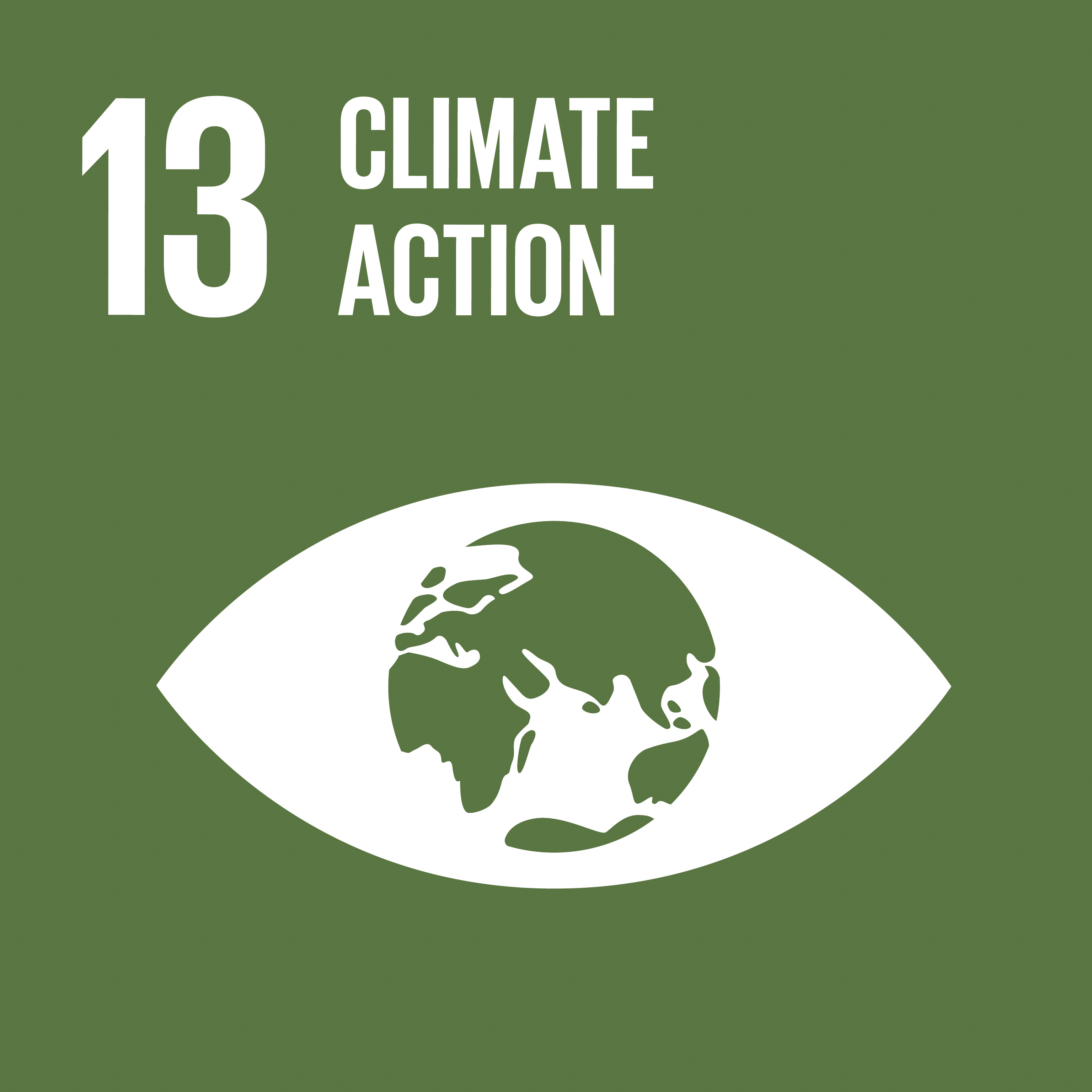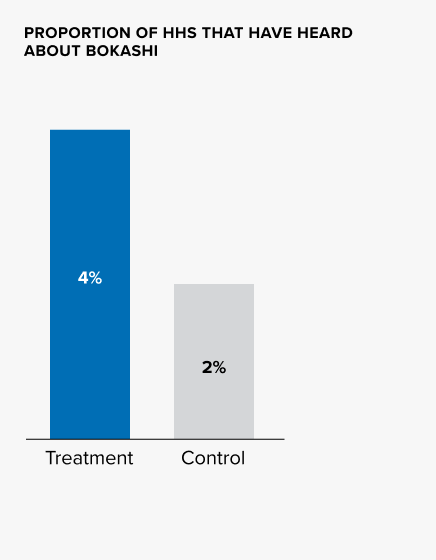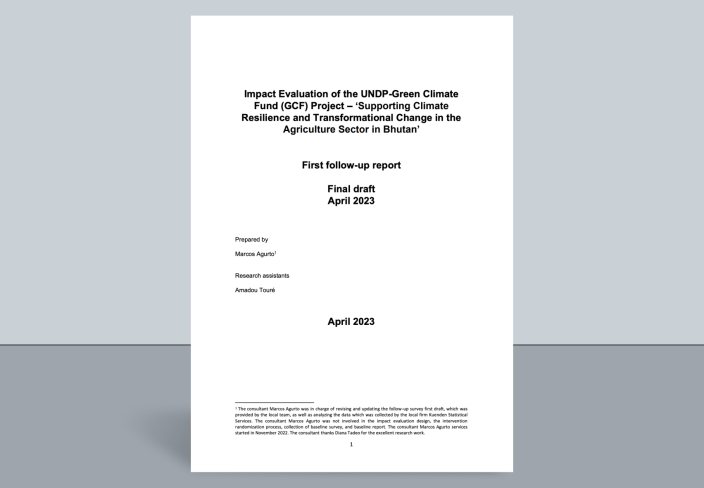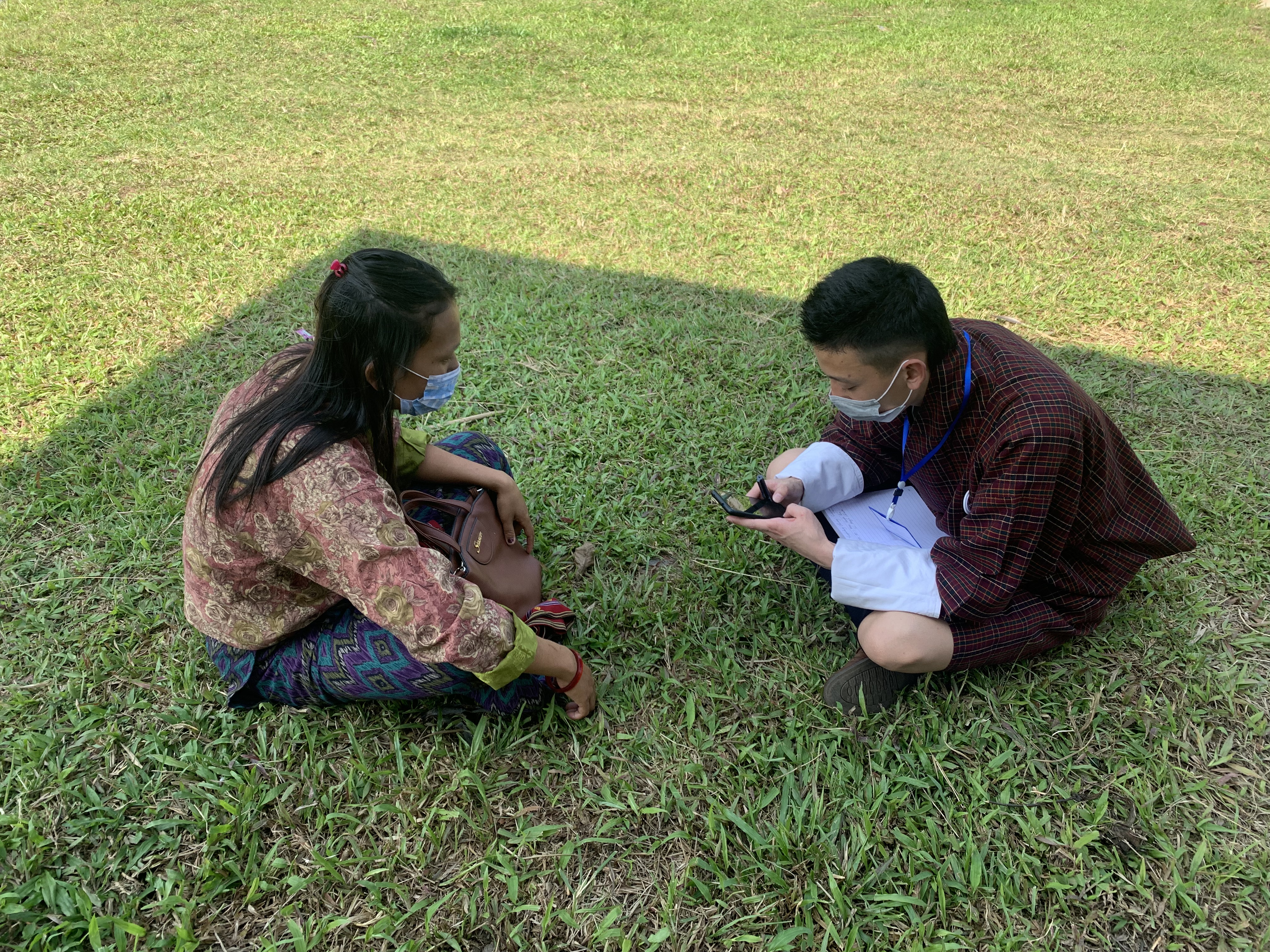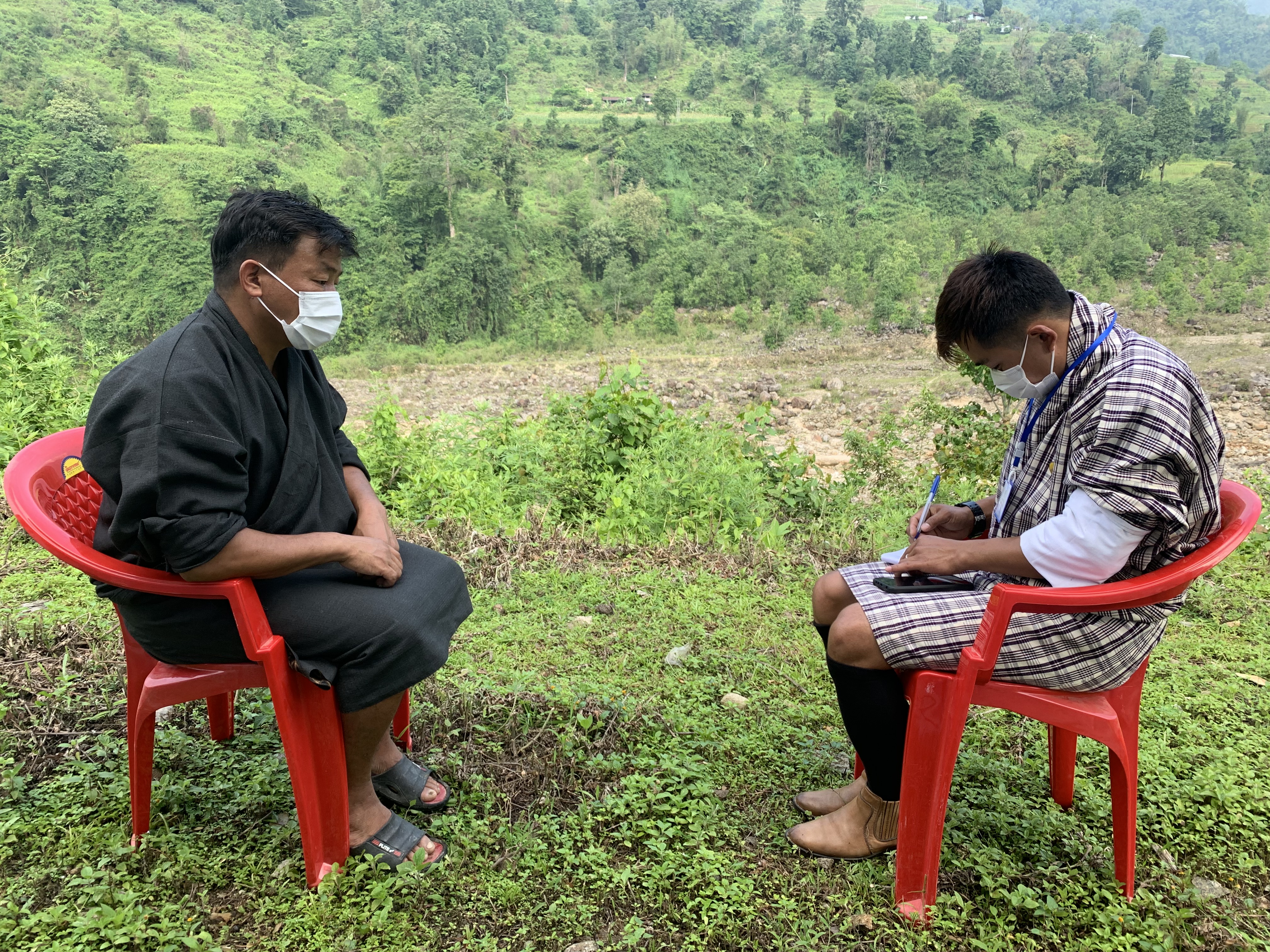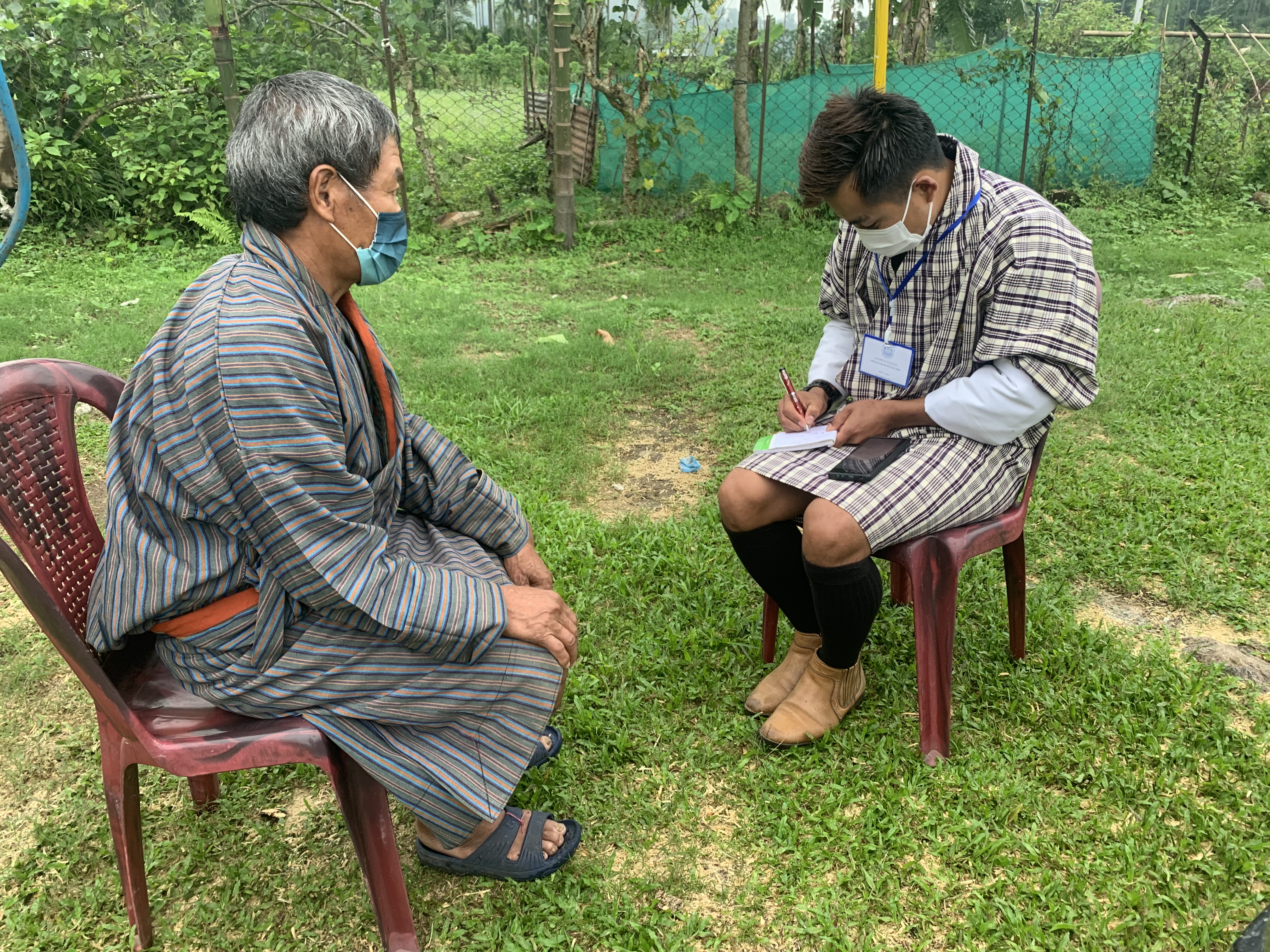Bhutan: Empowering farmers for transformational agriculture
Published on 10 May 2023
Overview
Bhutan's dependence on the agricultural sector as one of the main sources of revenue and employment makes the country highly vulnerable to climate risk. Integrated approaches are critical to maximize investments’ synergies and effectively build farmers’ resiliency to climate change.
Using integrated approaches for building climate resilience
Water shortages, crop losses due to weather events and limited coping capacity are recognized as key development challenges faced by Bhutan’s agricultural sector¹. Empirical evidence suggests that uptake of climate-resilient agricultural practices (e.g. organic farming, integrated pest management) is more likely when farmers also benefit from improved access to water supply and markets². Integrated approaches that focus on leveraging the complementarities of different types of investments tend to be more effective in removing different barriers to agricultural development - including knowledge barriers and limited access to inputs³.
However, resilience is the result of a long-term social process - rather than a technical challenge - that may only be measure through time as disturbances unfold⁴. Farmers may need time to experiment, change attitudes and learn about benefits and costs of climate-resilient practices as they may be labour-intensive and difficult to adopt in specific contexts⁵. Bottom-up approaches to measure farm-level adaptation and mitigation strategies that use dynamic snapshots are still very limited and can highly contribute to narrowing the knowledge gap in understanding the determinants of farmer’s climate-change resilience.
Boosting synergies in Bhutan
Financed by the GCF and the Government of Bhutan, with the technical support of UNDP, the project, ‘Supporting Climate Resilience and Transformational Change in the Agriculture Sector in Bhutan’ contributes to the transition to a ‘climate-informed planning agriculture’ in 8 targeted districts - selected due to their high poverty incidence and vulnerability to climate change, as well as potential for upscaling agricultural production. One part of the project focuses on making the physical environment more climate resilient through hard investments in road works and by transforming the irrigation system. In addition, the project provides farmers with skills to become individually and collectively resilient to climate change - these soft investments are locally implemented with the support of government’s agricultural extension services and sectors. Therefore, the project is best seen as developing an integrated approach, exploiting the possible complementarities between hard and soft investments in building climate resilience. Importantly, project’s results are also expected to contribute to achieving the country’s targets under the Sustainable Development Goals (SDGs) 1- ‘No poverty’, and 13 - ‘Climate Action’.
From theory to reality: How project’s inputs and activities are expected to generate impact
What the data tells us
Two rounds of extensive data collection were conducted in 2021 and 2023 for a total of 1,816 and 1,681 households, respectively, in 150 chiwogs from six districts targeted by the project, reporting information about agricultural activity, income, knowledge and adoption of climate-resilient agricultural practices, access to improved infrastructure and perceived wellbeing and vulnerability.
Data shows that the expected short-term benefits of the project have yet to be materialized. Except for bokashi, beneficiary households do not seem to have a higher level of knowledge or adoption of climate-resilient and sustainable agricultural practices and technologies than control ones. Beneficiary and non-beneficiary farmers also seem to be equally aware of practices such as mulching or biochar production, as well as sustainable land management practices adoption (e.g. dry land bench terracing and wet land terrace consolidation). Likewise, given that many of the irrigation and infrastructure interventions were still under implementation, data do not suggest that beneficiary farmers are relatively better off when it comes to access to markets, crop production and changes in agricultural income.

Note: The designations employed and the presentation of material on this map do not imply the expression of any opinion whatsoever on the part of the Secretariat of the United Nations or UNDP concerning the legal status of any country, territory, city or area or its authorities, or concerning the delimitation of its frontiers or boundaries.
| Non-beneficiary (C) | Beneficiary (T) | T-C | unit | |
|---|---|---|---|---|
| Perceived knowledge: Individual consider HH has necessary knowledge to fully implement climate-resilient and sustainable practices. | 0.14 | 0.15 | 0.01 (0.03) | % |
| Average score obtained in knowledge test about practices and technologies such as mulching, biochar, bokashi and greenhouses – maximum score is 9 | 1.33 | 1.25 | -0.08 (0.0) | score |
| Proportion of HHs that have heard about bokashi | 0.02 | 0.04 | 0.02** (0.02) | % |
| Proportion of HHs that have received forecast-warning information in 2022 | 0.55 | 0.58 | 0.03 (0.04) | % |
| Total rice production – kilos, last cropping season | 281 | 257 | -23.3 (29.5) | Kg |
| Total agricultural income, Nu | 38926 | 36398 | -2527 (-4223) | USD |
| Perceived vulnerability: Proportion of individuals who considers that if extreme weather event occurs next year, HH will lose less than half its total rice production. | 0.6 | 0.64 | 0.04 (0.04) | % |
Note: *p<0.05, **p<0.01, ***p<0.001
| T-C | Unit | |
|---|---|---|
| Proportion of HHs which farm is connected to paved road (road paved, feeder road paved or district-national highway) | 0.05 (0.06) | % |
| Proportion of rice area under irrigation – last cropping season 2022 | 0.09 (0.07) | % |
| Proportion of HHs which indicate their irrigation water is reliable | -0.01 (0.01) | % |
| Total rice cultivated area – acres, last cropping season 2022 | 0.13 (0.08) | acres |
| Total rice production – kilos, last cropping season 2022 | 41.3 (51.6) | Kg |
| Total agricultural income | -1.43 (-5.075) | USD |
Note: *p<0.05, **p<0.01, ***p<0.001
What's next
Despite the lack of evidence of short-term impacts at this stage of the project, findings from the on-the-ground survey are in line with the literature on learning and adoption – which suggest that these are processes usually take time, and while some individuals (maybe the more motivated, entrepreneurial or educated ones) may have started to experiment with the practices and technologies disseminated by the program, widespread learning and adoption are processes that may be still on the make. In addition, a relevant proportion of activities related to infrastructure development are expected to be completed during 2023, which still prevents farmers from fully tapping into the potential benefits of reliable water supply. New rounds of data collection (planned to 2025) can better shed light on the short-term synergies and effects of the integrated approach of the project.
“Climate resilient agriculture means being able to cultivate crops and have a good harvest amidst the changes in our immediate natural environment. We are aware of only few practices like how to manage our scarce water and how to take care of our fields, how to use green houses and do some tree plantation”
—Project's participant
Publication
References
[1] Chhogyel et al., 2020; Rehman Tariq et al., 2021
[2] Wangchuk and Siebert, 2013
[3] Climate Investment Fund, 2018;
[4] Béné, 2013; Kangogo et al.,2020
[5] Janvry; Sadoulet, 2020
Related projects
Intervention
This 5-year project (2020-2025) seeks to enhance the resilience of smallholder farms to climate change in eight districts (Dagana, Punakha, Trongsa, Tsirang, Sarpang, Samtse, Wangdue Phodrang, and Zhemgang) of Buthan. The strategy is based on the following:
- the promotion of resilient agriculture practices;
- the integration of climate change risks into water and land management practices; and
- the reduction of risk and impact of climate change induced landslides.
A soft component of the program is mainly related to the provision of agricultural extension services that promote the adoption of climate-resilient and sustainable agricultural practices and technologies, as well as the development, adoption, and effective use of weather information systems. The hard program component consists of infrastructure development, namely, irrigation systems and road building and maintenance.
Project Overview
Steps to assess impact
- Inception (plan, design and team set up)
- Develop & pilot a survey instrument
- Conduct a baseline survey & analysis
- Programme/Project implementation
- Conduct follow-up survey & analysis
- Estimation of impact / final report writing
- Dissemination of findings/evidence
Status
Ongoing
Start Date
November 2019
End Date
November 2025
survey firm
KUENDEN Statistical Services
Technical partners
UNDP
Green Climate Fund (GCF)
Approaches to assess the impact
The impact evaluation of the soft component of the program was based following an experimental RCT approach, while a quasi-experimental Difference-in Difference approach was followed to assess the second hard component of the program related to infrastructure’s intervention. Evaluation revolves around indicators related to access to climate-resilient irrigation schemes, water harvesting and storage, adoption of innovative irrigation technologies and sustainable land management practices, access to farm roads, connectivity roads, crop yield, diversification and multiple cropping. Another follow up survey is planned for 2025.
DIFFERENCE IN DIFFERENCE (DID)

Randomized control trial (RCT)



